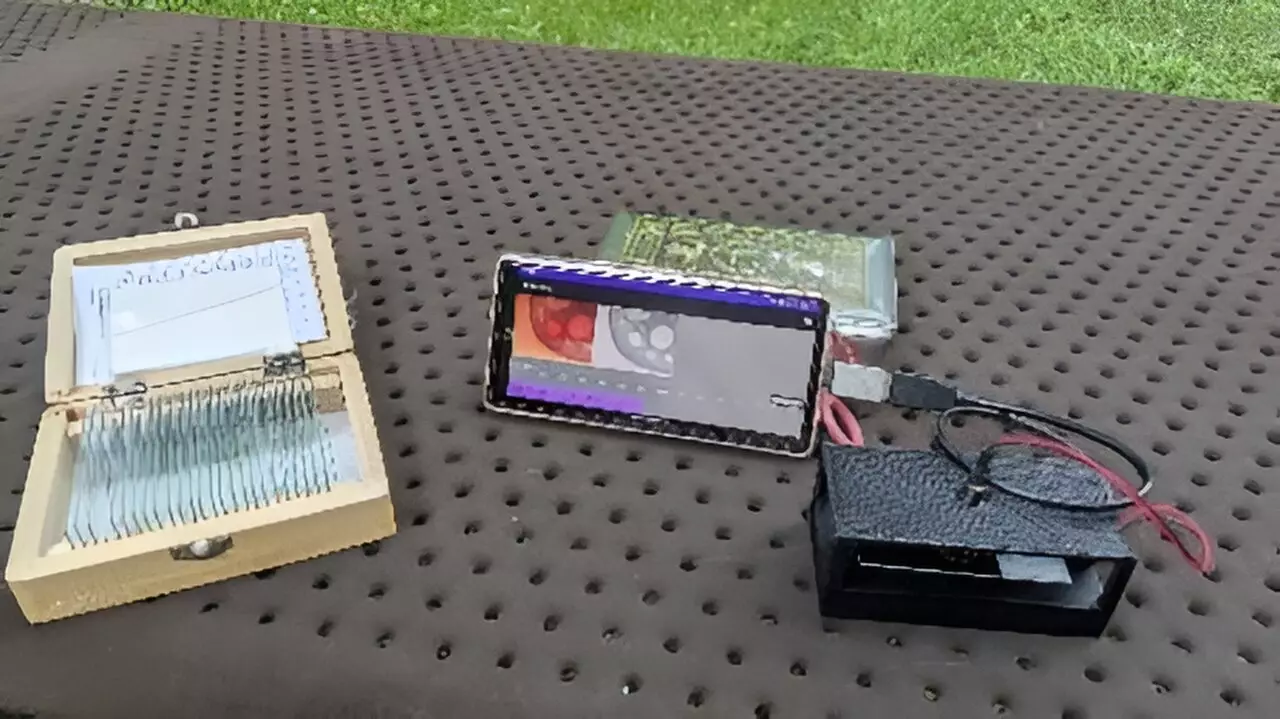The development of cutting-edge imaging technology has dramatically enhanced our understanding of the microscopic world. Among these advancements is the introduction of a new mobile digital holographic microscope that promises to redefine accessibility and functionality in scientific measurement and diagnostics. This innovative device offers precision 3D measurement capabilities, leveraging the power of smartphones while maintaining a lightweight and cost-effective design. Its potential ripple effects on various fields—including education, medical diagnostics, and scientific research—are nothing short of impressive.
Traditional digital holographic microscopes have been effective but come with significant limitations, primarily due to their reliance on complex optical systems and substantial computational resources often provided by personal computers. However, recent breakthroughs have shifted this paradigm. Researchers have engineered a smartphone-based digital holographic microscope that simplifies the construction of the optical system using readily available tools like 3D printers. As Yuki Nagahama from the Tokyo University of Agriculture and Technology explains, the design minimizes costs while maximizing portability, therefore democratizing access to advanced imaging technologies.
The essence of how digital holographic microscopes function lies in their ability to capture interference patterns produced by both a reference beam and light scattered from a sample. This setup enables the reconstruction of 3D information pertinent to the sample under examination, allowing researchers and professionals to conduct detailed analyses. Unlike previous iterations that required external hardware for image reconstruction, this smartphone-enabled device integrates computation directly into the mobile platform, allowing users to interact seamlessly with the visual data it presents.
One of the most noteworthy features of this innovative microscope is its real-time hologram reconstruction capabilities. Utilizing a method called band-limited double-step Fresnel diffraction, the research team successfully reduces the data load typically necessary for holographic processing. By decreasing the number of points needed for calculations, they have made it possible for standard smartphones—once considered insufficient for complex computations—to perform advanced imaging tasks. This creates a platform where users can zoom in on images through simple gestures, making the device intuitive and easy to handle.
The research team has reported a remarkable performance benchmark, achieving image reconstruction at a frame rate of up to 1.92 frames per second. This result is significant for applications requiring immediate visual feedback, such as medical diagnostics in field settings where time and accuracy are vital. The benefits extend beyond laboratories, offering educational value by enabling students to observe living organisms in various environments, including classrooms or home settings.
The implications of this technology for the medical field are particularly promising. With an increasing number of regions worldwide lacking access to advanced medical diagnostic tools, this smartphone-based microscope presents a solution that bridges technological gaps. Potential applications include the diagnosis of conditions like sickle cell disease in developing countries, where traditional diagnostic equipment is either scarce or prohibitively expensive. The affordability and portability of this digital microscope make it an attractive option for expanding healthcare access in low-resource settings.
Moreover, as research continues, the team is investigating the incorporation of deep learning techniques to enhance image quality further. Current digital holographic imaging can result in unintended artifacts, which could obscure critical diagnostic information. By employing AI-driven solutions, the researchers aim to refine images produced by the microscope, heightening their efficacy for clinical purposes. This represents an exciting frontier in medical imaging technology, where enhanced clarity can lead to improved patient outcomes.
Looking ahead, the potential for the smartphone-based digital holographic microscope extends into education and public awareness. The ability for students and novice scientists to engage with real-time data provides a hands-on learning experience that fosters a deeper appreciation for microscopy and biological sciences. The device’s accessibility could inspire future generations to explore careers in health, science, and technology.
As innovations like the smartphone-based digital holographic microscope emerge, they challenge traditional educational paradigms by enabling interactive learning experiences that transcend the limitations of conventional classroom environments. By providing students access to sophisticated technology, tomorrow’s scientists are equipped to conduct meaningful research and contribute to future innovations in microscopy and beyond.
This portable digital holographic microscope epitomizes the intersection of technology and accessibility, paving the way for groundbreaking applications in medicine and education. Its simplicity of use combined with sophisticated imaging capabilities promises to reshape how we visualize the microscopic world, ultimately leading to invaluable advancements in numerous fields.

